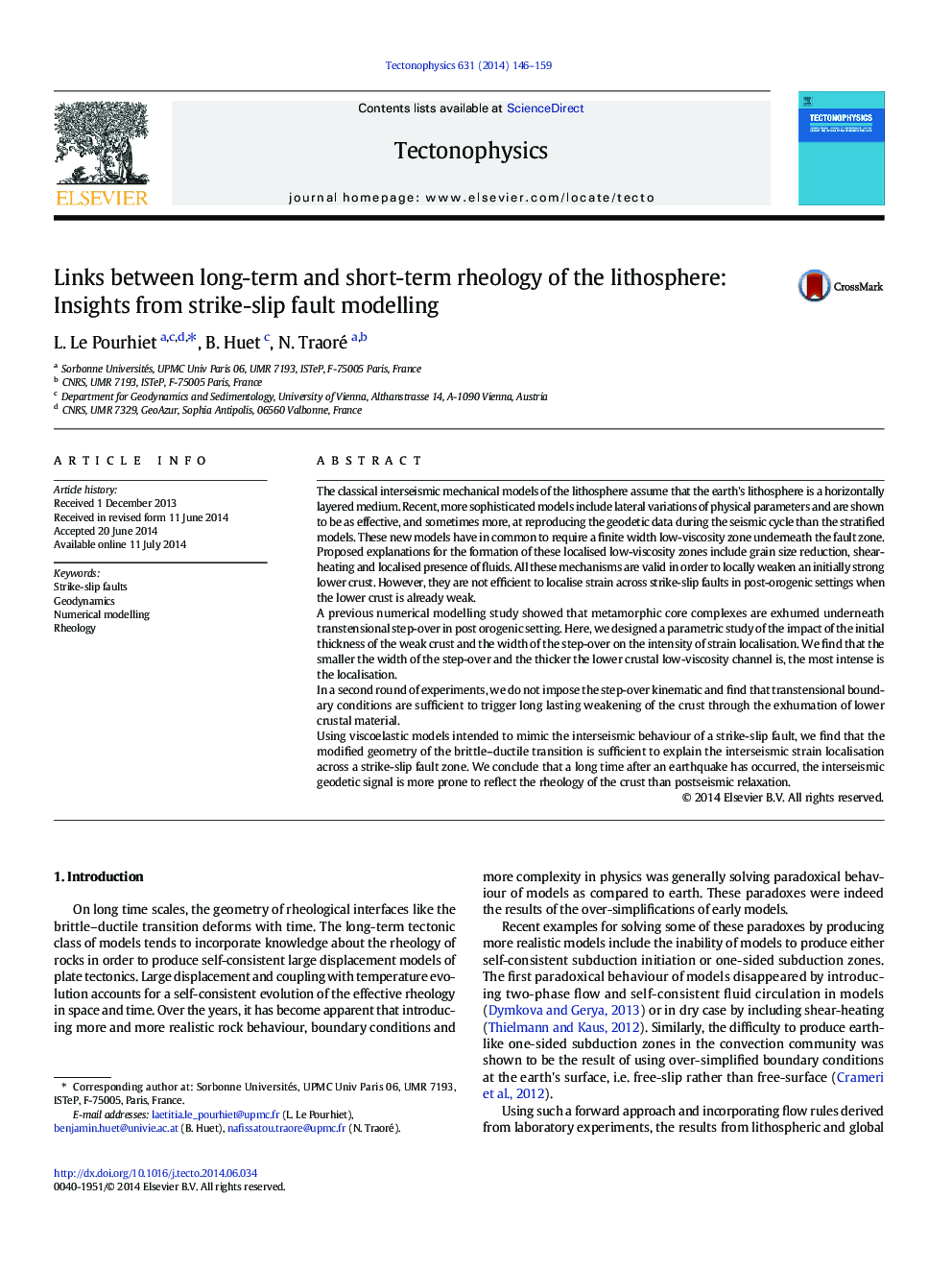| کد مقاله | کد نشریه | سال انتشار | مقاله انگلیسی | نسخه تمام متن |
|---|---|---|---|---|
| 4691882 | 1636760 | 2014 | 14 صفحه PDF | دانلود رایگان |
• Strain localisation across strike slip fault is favoured by transtension.
• Rock uplift associated to strike-slip fault localises strain in post-orogenic crust.
• Coupling modelling time scale is necessary to decipher geodetic signal.
• Geodetic velocity gradient reflects long-term lateral variation in viscosity.
The classical interseismic mechanical models of the lithosphere assume that the earth's lithosphere is a horizontally layered medium. Recent, more sophisticated models include lateral variations of physical parameters and are shown to be as effective, and sometimes more, at reproducing the geodetic data during the seismic cycle than the stratified models. These new models have in common to require a finite width low-viscosity zone underneath the fault zone. Proposed explanations for the formation of these localised low-viscosity zones include grain size reduction, shear-heating and localised presence of fluids. All these mechanisms are valid in order to locally weaken an initially strong lower crust. However, they are not efficient to localise strain across strike-slip faults in post-orogenic settings when the lower crust is already weak.A previous numerical modelling study showed that metamorphic core complexes are exhumed underneath transtensional step-over in post orogenic setting. Here, we designed a parametric study of the impact of the initial thickness of the weak crust and the width of the step-over on the intensity of strain localisation. We find that the smaller the width of the step-over and the thicker the lower crustal low-viscosity channel is, the most intense is the localisation.In a second round of experiments, we do not impose the step-over kinematic and find that transtensional boundary conditions are sufficient to trigger long lasting weakening of the crust through the exhumation of lower crustal material.Using viscoelastic models intended to mimic the interseismic behaviour of a strike-slip fault, we find that the modified geometry of the brittle–ductile transition is sufficient to explain the interseismic strain localisation across a strike-slip fault zone. We conclude that a long time after an earthquake has occurred, the interseismic geodetic signal is more prone to reflect the rheology of the crust than postseismic relaxation.
Figure optionsDownload as PowerPoint slide
Journal: Tectonophysics - Volume 631, 15 September 2014, Pages 146–159
